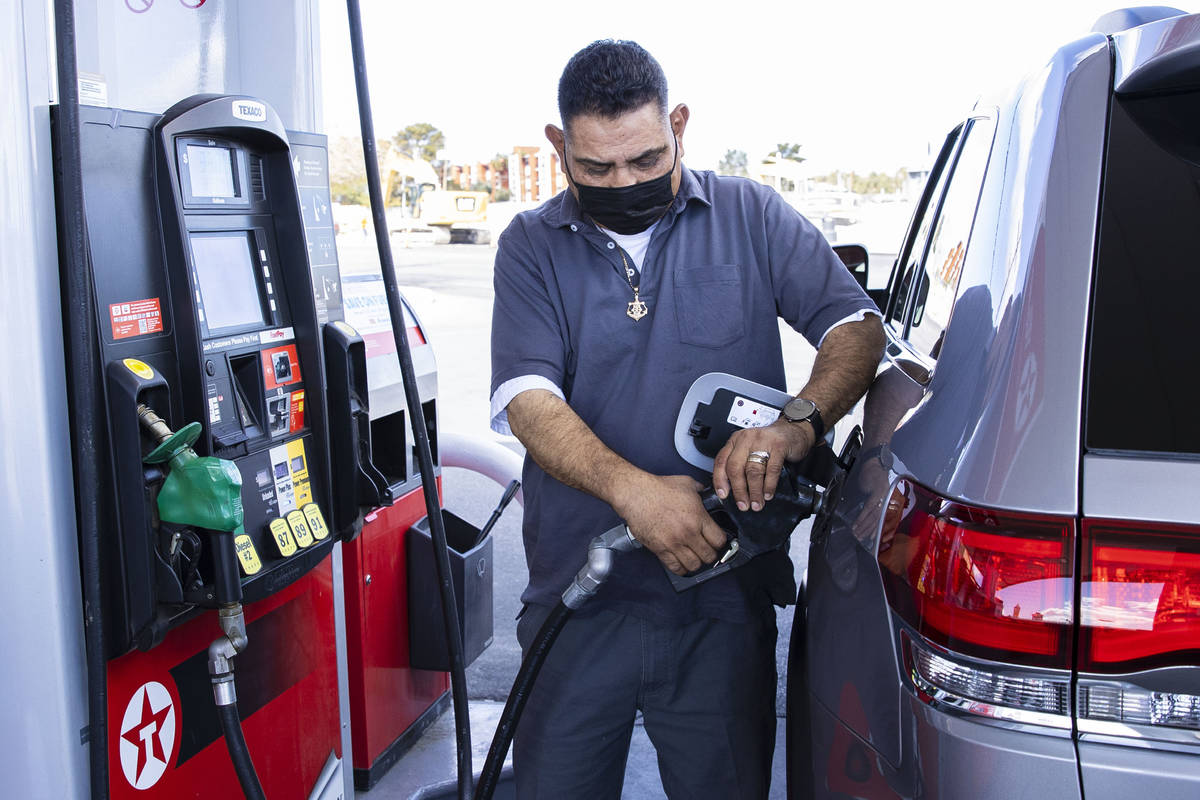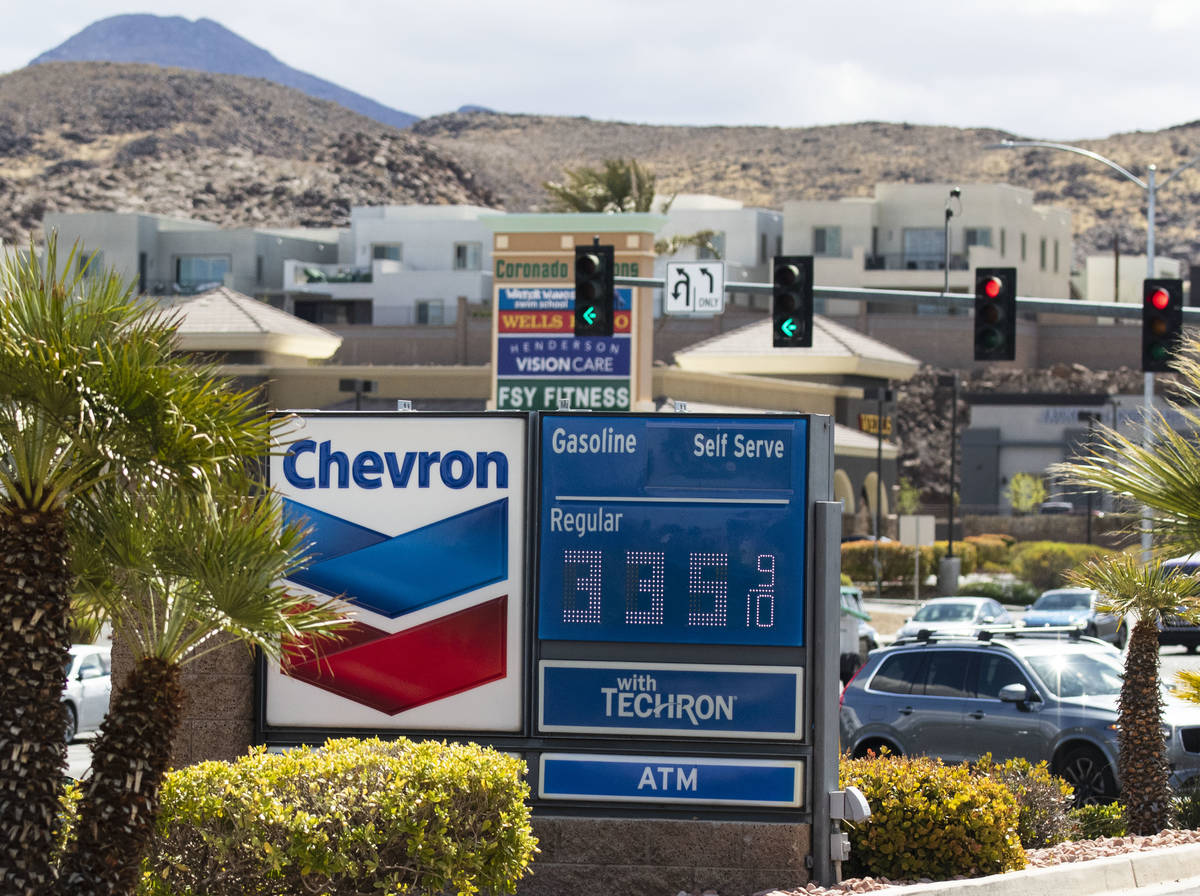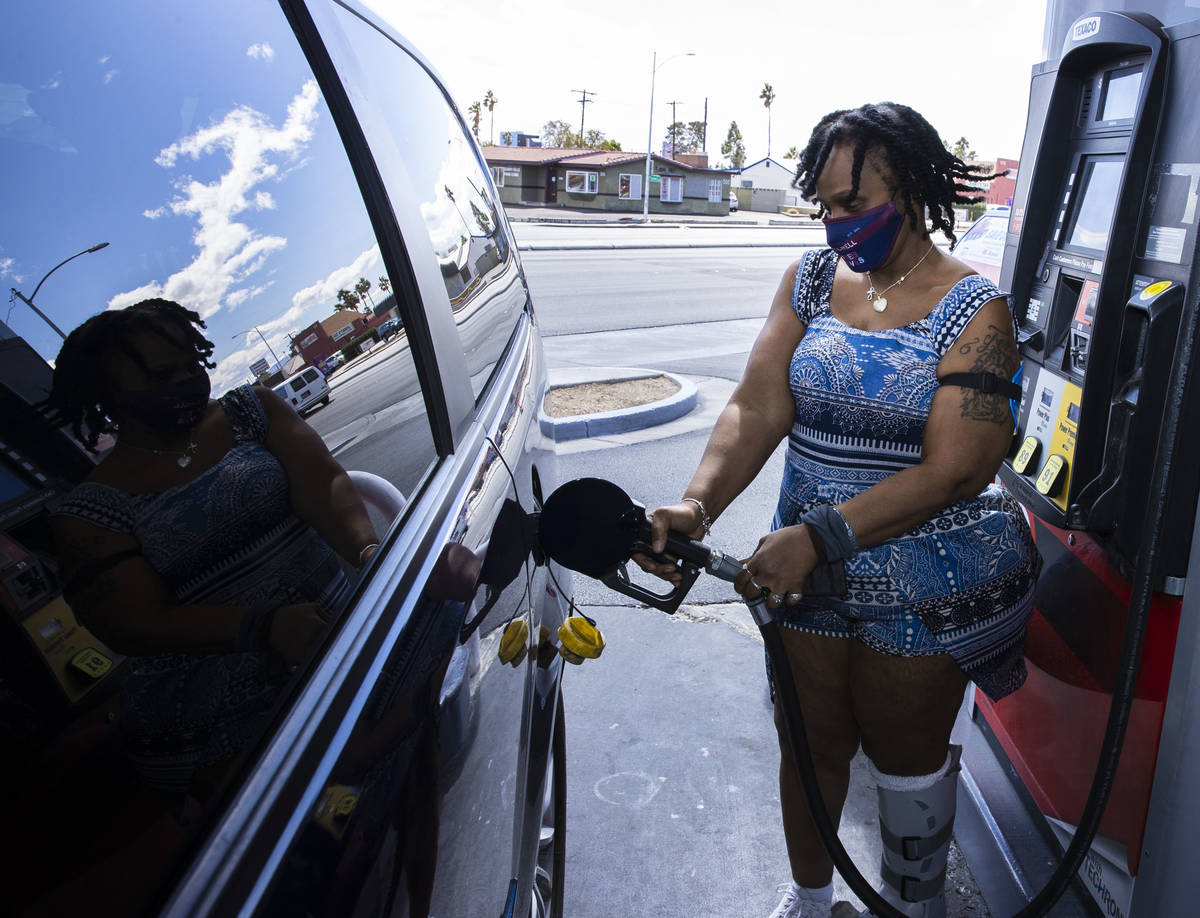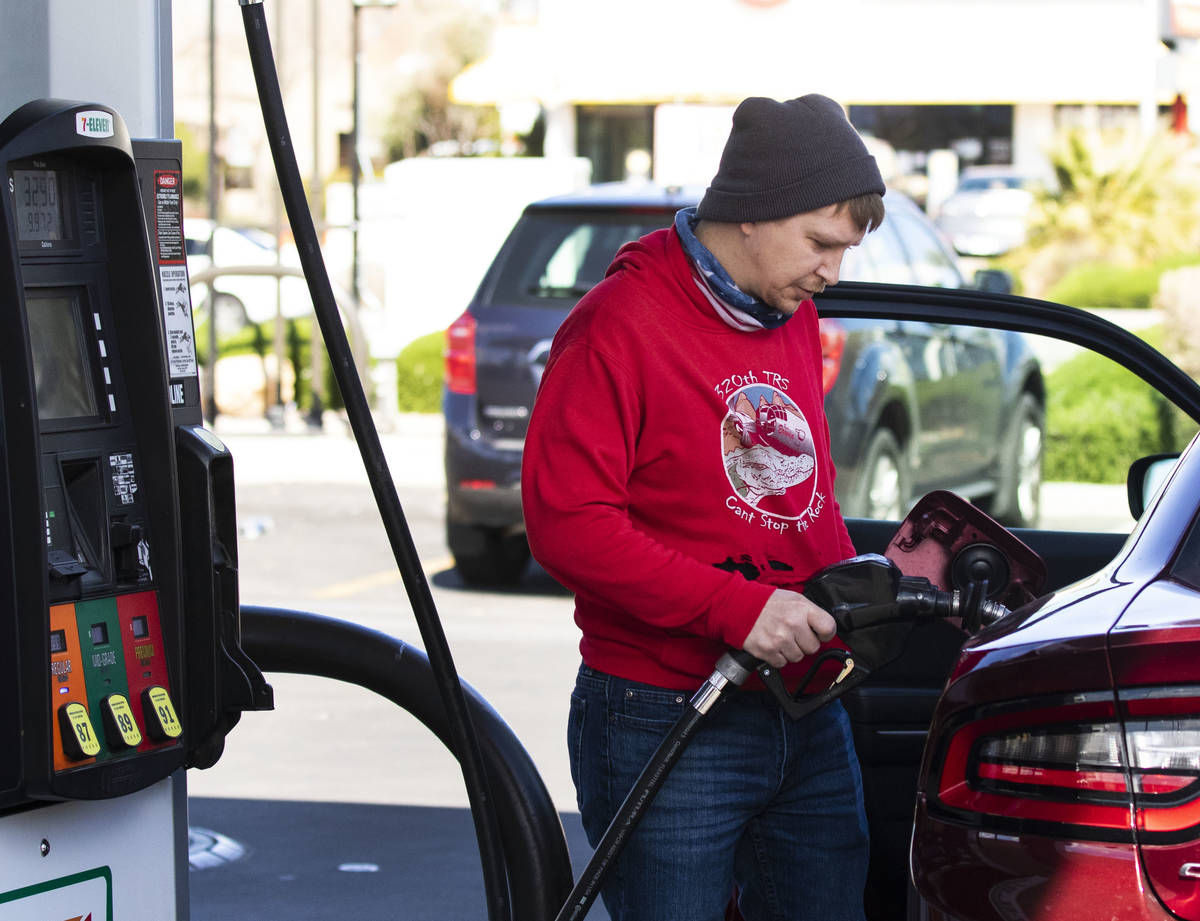Gas prices rose 37 cents in the last month. Here’s why.
Gasoline prices have surged over the last month, with the average price for regular unleaded jumping 37 cents in the Las Vegas metro area.
Locally, the average price went from $2.84 a month ago to $3.21 as of Monday, according to AAA.
The Silver State’s average price of gas also increased 37 cents in the past month, while the national average jumped 38 cents, according to AAA data. The price at the pump has climbed 72 cents since Nov. 20.
“This increase isn’t something that is just isolated to the West,” said Sergio Avila, AAA Nevada spokesman. “It’s something happening across the country. Every state average has climbed by double digits since February, resulting in one in 10 gas stations with pump prices that are $3 per gallon or more.”
Industry analyst Trilby Lundberg of the Lundberg Survey said the price spike is due to higher crude oil costs, the lingering effect of power outages that caused several Texas refineries to shut down or reduce operations last month, and surging prices on credits for a renewable fuel.
Patrick De Haan, head petroleum analyst for GasBuddy.com, said it boils down to supply and demand.
“In the last couple of months as we have started to see improvement with the pandemic, Americans have been finding places to go,” De Haan said. “Demand for gasoline is now just under where it was pre-pandemic.”
Rising demand
De Haan attributes the rise in motorists on roads nationwide to the continued vaccine rollout, states easing coronavirus-related restrictions and people getting back to work.
Despite that increased demand, oil producers that cut production during the pandemic have yet to ramp back up, De Haan said.
“That’s why prices have escalated since really November of last year,” De Haan said. “Everyone likes to point out that the election was in early November, but so too was the fact that the vaccine was up and coming. It held significant promise to get oil demand back to where it might be otherwise.”
De Haan said the gas price increase is not tied to President Joe Biden taking office, as many have speculated online.
“Apparently there’s thousands of closet petroleum oil analysts out there who get to decide what is fueling prices,” De Haan said. “Though gasoline demand has made a broad recovery to just under a year-ago levels, many other fuels have not — jet fuels being one of them. The fact that prior to COVID there was no shortage of pipeline capacity at all, there remains no shortage of pipeline capacity, seeing how volumes are still lower.”
Biden’s decision to halt Keystone Pipeline work doesn’t affect gas prices at the moment, De Haan said.
“If you take a pipeline that’s been utilized and counted on for years, then you’d have a problem,” he said. “But to simply remove a non-functioning pipeline from the equation is not something that would materially drive prices up. It could in the future should there be enough crude oil production return that we do need that pipeline capacity, but that wouldn’t be for years.”
No relief soon
Another misconception is that Biden has banned hydraulic fracturing, also known as fracking, which many have pointed to as one of the reasons for rising gas prices. De Haan said that’s untrue, as Biden put a 60-day moratorium on new wells on federal land, which went into effect in January.
He noted that oil companies are producing about 10 million barrels of oil a day, below the 13 million barrels a day they were producing a year ago.
“Until we get back up to the 13 million barrel-a-day pre-pandemic level, there’s no oil company that’s going to be looking to stick a new drill in the ground, whether it be on federal or private land,” he said.
De Haan expects prices to continue to rise until oil producers increase production, which he doesn’t see occurring anytime soon.
Avila agreed and noted that crude oil prices are at a two-year high. Benchmark U.S. crude oil climbed 57 cents Monday to $66.18 per barrel in electronic trading on the New York Mercantile Exchange.
“Crude oil prices account for about 50 percent of the price drivers pay at the pump,” Avila said. “With refinery utilization at a record low, gasoline supplies tightening, demand modestly increasing due to loosening restrictions and crude prices on the rise, cheap prices are in the rear view mirror for the immediate future.”
Contact Mick Akers at makers@reviewjournal.com or 702-387-2920. Follow @mickakers on Twitter. The Associated Press contributed to this report.





















